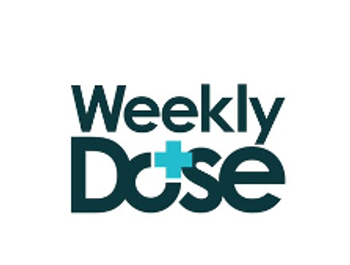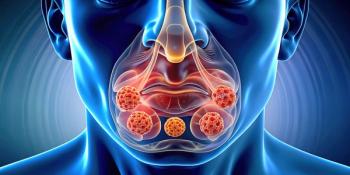
The AIDS Reader
- The AIDS Reader Vol 18 No 3
- Volume 18
- Issue 3
Editorial Comment: Osteonecrosis in HIV-Infected Persons-Does Delayed Diagnosis Matter?
Osteonecrosis, also known as avascular necrosis or aseptic necrosis, refers to ischemic death of the cellular constituents of bone and marrow when it occurs in the epiphyseal or subarticular region. The incidence of osteonecrosis may be increased by as much as 100-fold in HIV-infected persons relative to the general population,1
Osteonecrosis, also known as avascular necrosis or aseptic necrosis, refers to ischemic death of the cellular constituents of bone and marrow when it occurs in the epiphyseal or subarticular region. The incidence of osteonecrosis may be increased by as much as 100-fold in HIV-infected persons relative to the general population,1 making this condition an increasingly important cause of morbidity. While it typically involves the hip, other joints may also be affected, including the shoulders, wrists, knees, and ankles.2 Hip involvement is often bilateral.
With osteonecrosis of the hip, much of the morbidity is due to collapse of the femoral head in the later stages of the condition, which can be a source of debilitating and immobilizing pain. Although much of the existing data likely suffers from selection bias, HIV-infected persons appear to present frequently with advanced osteonecrosis and may have rapid progression of disease.1,2
Johnson and Decker3 report an interesting series of 4 HIV-infected patients whose diagnoses of osteonecrosis were delayed by weeks to months after plain radiographs were nondiagnostic. Osteonecrosis was managed conservatively with analgesics in 2 of the patients, and 2 ultimately underwent total hip arthroplasty. The authors make the important point that radiographs are relatively insensitive in early disease and that MRI should be done when findings on plain films are normal and suspicion of osteonecrosis remains. While this approach makes sense intuitively, would earlier diagnosis have altered the management of these patients or the course of their disease?
The management of osteonecrosis can be divided into conservative (nonsurgical) management and surgical management. Traditionally, conservative management has consisted of analgesia and limiting weight bearing, with use of crutches, cane, or walker as appropriate. The available data suggest that restricting weight bearing does not generally delay collapse of the femoral head, but this approach is often advocated for asymptomatic, small precollapse lesions that may be detected by imaging the contralateral hip of a symptomatic patient.4 Data are limited on the efficacy of noninvasive treatment modalities, such as hyperbaric oxygen, electromagnetic stimulation, and extracorporeal shock wave therapy.
Based on promising animal data, there has been interest in therapy with bisphosphonates with the aim of slowing the resorption of necrotic bone that may contribute to collapse. Lai and colleagues5 randomized 40 patients to weekly alendronate for 25 weeks or to observation in an open-label study and found that 2 of 29 hips in the alendronate arm collapsed over 2 years of follow-up compared with 19 of 25 in the control arm. More recent data linking bisphosphonate use to osteonecrosis of the jaw,6 however, raises concern about this approach. Furthermore, no efficacy data on this intervention are available in HIV-infected persons.
Most patients with symptomatic osteonecrosis ultimately require surgical intervention. Early-stage disease is sometimes managed with core decompression, which involves the extraction of cores of bone from the femoral head with the aim of reducing the intraosseous pressure that may be contributing to the disease process. Of note, 2 of the patients reported by Johnson and Decker did not respond to core decompression and ultimately underwent total hip arthroplasty. Alternative procedures include osteotomy, in which necrotic bone is moved away from the weight-bearing surface, and bone grafting-both of which may be falling out of favor because they may compromise the success of subsequent total hip arthroplasty.7
The natural history of osteonecrosis in HIV-infected persons is not well understood. In the only longitudinal study done to date, Morse and colleagues1 found that after a median follow-up of 26 months, 13 (59%) of 22 patients with symptomatic osteonecrosis underwent total hip arthroplasty; the median time from diagnosis to surgery was 10 months (range, 1 to 45 months). In contrast, only 2 of 18 patients with asymptomatic osteonecrosis had progression at a median duration of follow-up of 5.7 years, both of whom underwent total hip arthroplasty. In a combined analysis of the symptomatic and asymptomatic cohorts, total hip arthroplasty was only performed on patients who initially presented with at least 50% involvement of the femoral head, regardless of symptoms.
Taken together, the available data indicate that there are no interventions proven to affect the natural history of osteonecrosis. While MRI can clearly detect asymptomatic osteonecrosis,8 there is no role for screening asymptomatic patients for this condition. Earlier detection of osteonecrosis in symptomatic patients, however, may be valuable for several, mostly theoretical, reasons. Aside from the psychological benefits to both patient and clinician of having a clear diagnosis, some orthopedic surgeons attempt core decompression for earlier-stage (precollapse) lesions-although there is controversy about the merits of this procedure-with the goal of avoiding total hip arthroplasty. Modification of potential risk factors for osteonecrosis, such as hyperlipidemia, alcohol use, smoking, and corticosteroid exposure, could have favorable effects on progression, although there are no data in this regard. Lastly, if noninvasive treatments prove effective in ongoing and future studies, early diagnosis of osteonecrosis could avoid or delay the need for surgery.
Marshall J. Glesby, MD,
PhD Associate Professor of Medicine
Weill Medical College of Cornell University
New York
References 1. Morse CG, Mican JM, Jones EC, et al. A. The incidence and natural history of osteonecrosis in HIV-infected adults. Clin Infect Dis. 2007;44:739-748.
2. Allison GT, Bostrom MP, Glesby MJ. Osteonecrosis in HIV disease: epidemiology, etiologies, and clinical management. AIDS. 2003;17:1-9.
3. Johnson MD, Decker CF. Osteonecrosis in HIV-infected patients: radiographic findings delay clinical diagnosis. AIDS Reader. 2008;18:124-126, 132-133.
4. Mont MA, Jones LC, Hungerford DS. Nontraumatic osteonecrosis of the femoral head: ten years later [published correction appears in J Bone Joint Surg Am. 2006;88:1602]. J Bone Joint Surg Am. 2006;88:1117-1132.
5. Lai KA, Shen WJ, Yang CY, Shao CJ, et al. The use of alendronate to prevent early collapse of the femoral head in patients with nontraumatic osteonecrosis. A randomized clinical study. J Bone Joint Surg Am. 2005;87:2155-2159.
6. Woo SB, Hellstein JW, Kalmar JR. Narrative [corrected] review: bisphosphonates and osteonecrosis of the jaws [published correction appears in Ann Intern Med. 2006;145:235]. Ann Intern Med. 2006;144:753-761.
7. Hungerford DS, Jones LC. Asymptomatic osteonecrosis: should it be treated? Clin Orthop Relat Res. 2004;(429):124-130.
8. Miller KD, Masur H, Jones EC, et al. High prevalence of osteonecrosis of the femoral head in HIV-infected adults. Ann Intern Med. 2002;137:17-25.
Articles in this issue
over 17 years ago
Current Health Disparities in HIV/AIDSover 17 years ago
Sweet Syndrome and Syphilis in an HIV-Infected Personover 17 years ago
Editorial Comment: Sweet Syndrome-A Diagnosis Seeking a Causeover 17 years ago
Encouraging Leadership That Actually Leads Usover 17 years ago
Durability of Clinical Responses to Anti-HIV TherapiesNewsletter
Enhance your clinical practice with the Patient Care newsletter, offering the latest evidence-based guidelines, diagnostic insights, and treatment strategies for primary care physicians.




























































































































































































































































































